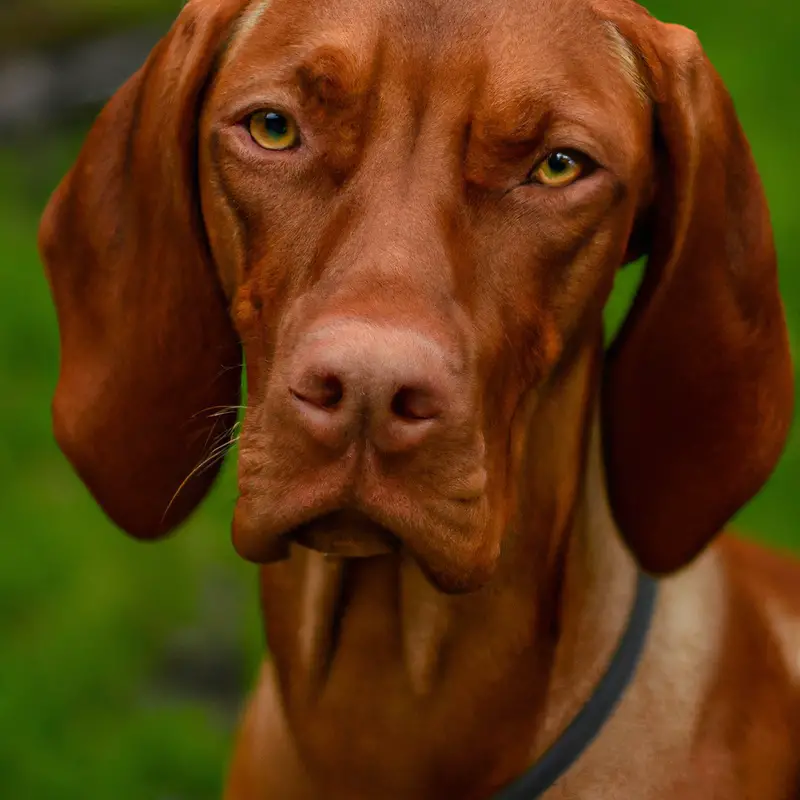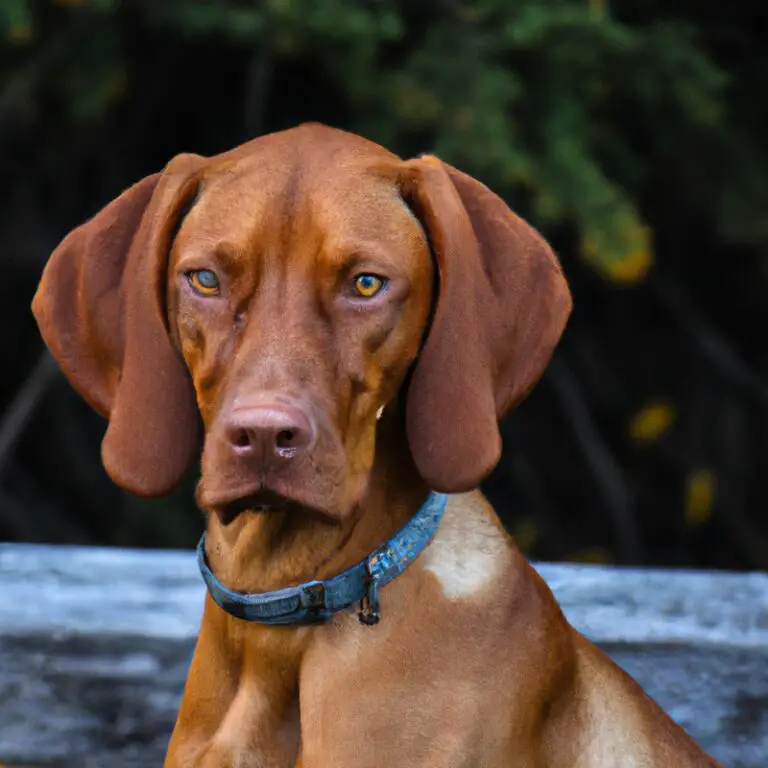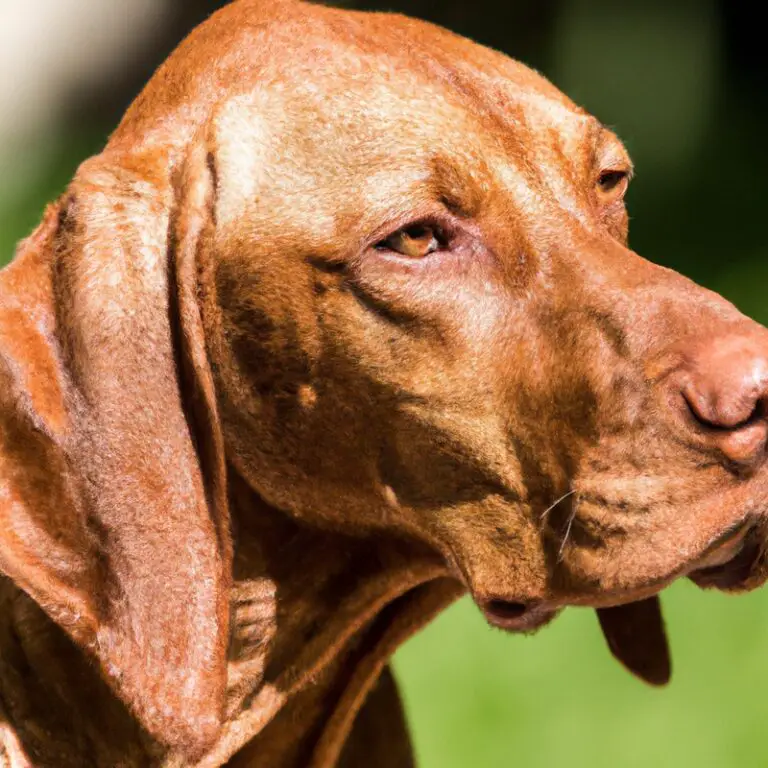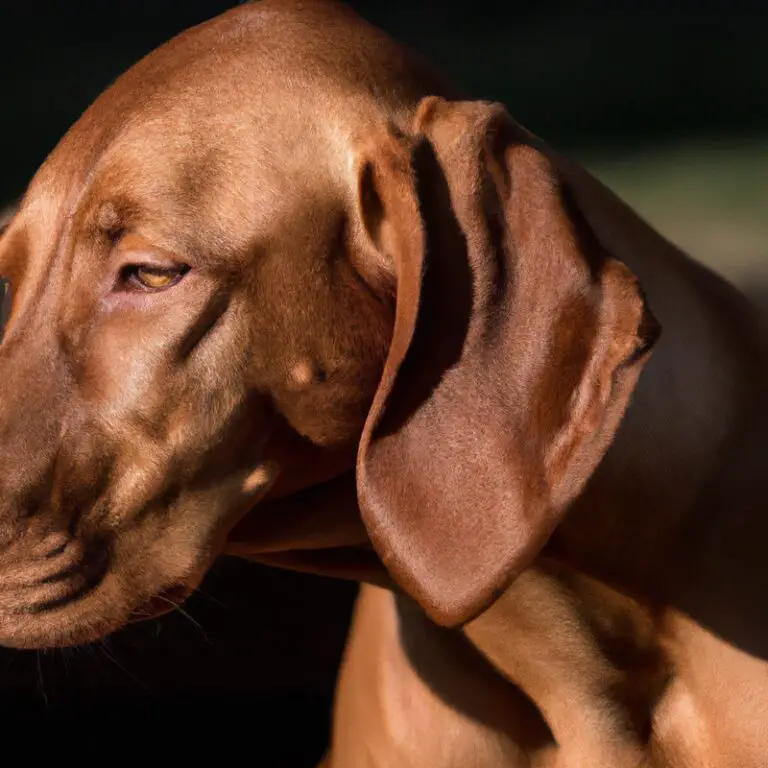What Is The Best Age To Start Training a Vizsla?
Key Takeaways:
- Starting training at a young age is crucial for Vizslas to develop good behavior and manners.
- It is recommended to begin basic obedience training with Vizslas as early as 8 to 10 weeks old.
- Consistency, positive reinforcement, and patience are key when training Vizslas.
- Early socialization is essential to help Vizslas become well-rounded and adaptable dogs.
Are you a proud Vizsla parent or considering bringing home this remarkable breed? If so, you might be wondering when the best time is to start training your Vizsla.
Well, you’ve come to the right place! As someone who has owned and trained Vizslas for years, I’m passionate about helping fellow dog lovers navigate the ins and outs of raising these beautiful and energetic companions.
In this blog, we’ll dive deep into understanding the Vizsla breed, explore the factors to consider when deciding the training age, discuss the ideal age to start training, and share some effective training techniques for young Vizslas. Let’s get started!
| Age | Training |
| 8-12 weeks | Basic obedience training, crate training, socialization with people and other dogs |
| 3-6 months | More advanced obedience training, leash training, introduction to basic commands, such as sit, stay, and come |
| 6-12 months | Continued obedience training, introduction to more complex commands, such as heel, down, and leave it; reinforcement of good behaviors |
| 1-2 years | Transition to more specialized training, such as agility, tracking, or hunting; continued reinforcement and reinforcement of good behaviors |
| 2+ years | Ongoing training and reinforcement to maintain skills and behaviors; focus on specific areas of interest or competition |
Understanding the Vizsla breed
Overview of the Vizsla breed
The Vizsla breed is a medium-sized hunting dog that originated in Hungary.
They are known for their energetic and athletic nature, making them excellent companions for active individuals or families.
Vizslas have a short, dense coat that comes in shades of golden rust.
They are intelligent, trainable, and highly affectionate.
Due to their high energy levels and need for mental stimulation, regular exercise and positive reinforcement training are essential for their well-being.
Vizslas thrive in households where they receive plenty of attention, exercise, and mental challenges.
Characteristics and traits of Vizslas
Vizslas are known for their energetic and affectionate nature. They thrive on human companionship and love to be part of family activities.
Here are some key characteristics and traits of Vizslas to keep in mind:
- Vizslas are highly intelligent dogs and are very eager to please their owners. This makes them quick learners and responsive to training.
- They have a strong hunting instinct and are incredibly athletic. Regular exercise is essential to keep them happy and healthy.
- Vizslas are social animals and enjoy being around people and other animals. They are not suited for a solitary lifestyle and require plenty of attention and affection.
- They are gentle and sensitive in nature, which makes them great companions for families with children. However, they may not be suitable for households with very young kids due to their exuberance.
- Vizslas have a short, low-maintenance coat but do shed. Regular brushing will help keep their coat clean and minimize shedding.
Overall, Vizslas are loyal, active, and loving pets that thrive in an environment where they have plenty of opportunities for mental and physical stimulation. With the right training and socialization, they can be fantastic companions for the right owner.

Exercise and training needs of Vizslas
Vizslas are an active and energetic breed that thrive with regular exercise.
They need plenty of physical activity to keep them happy and healthy.
Daily walks, runs, or hikes are essential for meeting their exercise needs.
Additionally, Vizslas excel in activities such as agility, obedience, and field work.
Training is also important for their mental stimulation.
Consistent and positive reinforcement training methods work best with this intelligent breed.
Regular exercise and training will help keep your Vizsla stimulated and well-behaved.
Factors to consider when deciding the training age for a Vizsla
Physical and mental development of Vizslas
Vizslas are known for their athletic build and high intelligence.
Both their physical and mental development are important to consider when training them.
Physically, Vizslas tend to mature around 18 to 24 months in terms of their size and strength.
However, their energy levels may remain high throughout their lives.
Mentally, Vizslas are quick learners and have a strong desire to please their owners.
This makes them receptive to training from an early age.
Starting training and socialization when they are puppies can help them develop good behavior and manners as they grow older.
Regular exercise and mental stimulation are also crucial for their overall well-being.

Socialization requirements for Vizslas
Socialization is essential for Vizslas to develop into well-rounded and friendly dogs. Introduce them to various people, animals, and environments from a young age.
Expose them to different sights, sounds, and experiences to build their confidence.
Organize playdates with other dogs and allow them to interact under supervision. Enroll them in puppy socialization classes to learn proper behavior and manners.
Regularly expose them to different places and situations to avoid fear or anxiety.
The more positive experiences they have, the more socialized and adaptable they will become.

Individual differences in Vizsla puppies
Vizsla puppies, like any other puppies, can have individual differences. These differences can include their temperament, energy levels, and learning abilities.
Some Vizsla puppies may be more outgoing and eager to please, while others may be more reserved or independent.
It’s important to be patient and understanding when training your Vizsla puppy, as their individual traits and needs may vary. Tailor your training methods to suit your puppy’s unique personality and pace, and always remember to reward positive behavior.
Ideal age to start training a Vizsla
Importance of early socialization and basic training
Early socialization and basic training are vital for a Vizsla’s development. It helps them become well-rounded and confident dogs.
Early socialization exposes them to different people, animals, and environments, preventing fear or aggression later on.
Basic training establishes a foundation for good behavior and enables effective communication between you and your Vizsla. It’s important to start these practices as early as possible to ensure a happy and balanced dog.
Developmental milestones for Vizslas
As a Vizsla owner, I understand the importance of knowing the developmental milestones for these energetic dogs.
Here are some key milestones to look out for:
- Around 8 to 12 weeks: Vizslas begin exploring their surroundings and socializing with other dogs and humans. It’s crucial to start positive reinforcement training at this stage.
- to 6 months: Vizslas go through a growth spurt and may become more independent. Focus on basic obedience training and continue socialization to ensure they develop good manners.
- to 12 months: Vizslas reach sexual maturity, and their energy levels peak. This is the time to reinforce training commands and work on advanced obedience skills.
- to 2 years: Vizslas start to settle into adulthood and their exercise needs decrease slightly. However, mental stimulation and ongoing training are still important to keep them engaged and prevent boredom.
By keeping an eye on these developmental milestones, you can ensure that your Vizsla grows into a well-behaved and happy companion.
Balancing training and allowing puppies to be puppies
Finding the right balance between training and allowing puppies to be puppies is essential. It’s important to start training early, but also to let them have fun and stay curious.
Allow them to explore their surroundings and interact with other dogs and people.
Incorporate short and fun training sessions into their daily routine. Focus on basic commands and positive reinforcement.
Remember, puppies have short attention spans, so keep training sessions short and engaging.
Training techniques for young Vizslas
Positive reinforcement methods
Positive reinforcement is a highly effective training method for Vizslas.
It involves rewarding desired behaviors with treats, praise, or playtime.
This helps to reinforce the behavior and encourages them to repeat it.
Some examples of positive reinforcement methods include clicker training, where a clicker is used to mark the desired behavior before rewarding it, and lure training, where a treat is used to guide the dog into performing the desired action.
Remember, consistency and patience are key when using positive reinforcement with your Vizsla.
Basic commands to start with
To start training your Vizsla, focus on these basic commands:
- Sit: Teach your Vizsla to sit on command. Use treats as positive reinforcement.
- Stay: Train your Vizsla to stay in one place until you release them. Start with short durations and gradually increase.
- Come: Teach your Vizsla to come when called. Use a happy tone and reward them when they respond.
- Leave it: Train your Vizsla to ignore or drop something on command. Useful for safety and preventing them from chewing on inappropriate items.
- Down: Teach your Vizsla to lie down on command. Pair it with a hand signal for better understanding.
Remember to keep training sessions short and positive, focusing on one command at a time. Happy training!
Crate training and housebreaking tips
Crate training and housebreaking are important aspects of raising a Vizsla. Here are some tips:
- Start crate training early by introducing your Vizsla to the crate gradually and making it a positive experience.
- Use positive reinforcement and rewards to encourage your Vizsla to go into the crate willingly.
- Set a consistent schedule for bathroom breaks to help with housebreaking.
- Supervise your Vizsla closely during the housebreaking process and take them outside frequently.
- Clean up accidents promptly and use appropriate cleaning products to eliminate odors.
- Be patient and consistent in your training approach. Your Vizsla will learn with time and repetition.
Frequently Asked Questions
Can you start training a Vizsla too early?
Absolutely! While it’s important to start training a Vizsla early, you also need to consider their development. Puppies have shorter attention spans, so keep training sessions short and fun.
Focus on basic commands and socialization.
Remember to use positive reinforcement and be patient. Too much training too early can overwhelm them, so find the right balance.
As they grow, you can gradually introduce more advanced training techniques.
Happy training!
Is it ever too late to start training a Vizsla?
Is it ever too late to start training a Vizsla?
No, it’s never too late! While it’s ideal to start training when they’re young, Vizslas are intelligent and eager to please at any age.
With patience, consistency, and positive reinforcement, you can still teach them new commands and behaviors.
Just remember to tailor the training to their individual needs and be patient with progress.
How long does it take to train a Vizsla?
Training a Vizsla typically takes around 6-8 months, but it can vary depending on the dog and your consistency in training.
Consistent and positive reinforcement methods are important for their energetic and sometimes stubborn nature.
Socialization, obedience, and specific commands like recall should be a focus.
Remember to be patient, understanding, and consistent in order to achieve desired results.
Final Verdict
The best age to start training a Vizsla is during their critical socialization period, which occurs between 8 and 16 weeks of age.
This is when they are most receptive to learning and forming positive associations.
However, it’s important to remember that training is an ongoing process, and starting early is just the foundation.
Consistency, patience, and positive reinforcement are key to successfully training a Vizsla at any age.
Remember, every dog is unique, so it’s crucial to tailor the training to suit their individual needs.
Happy training!








